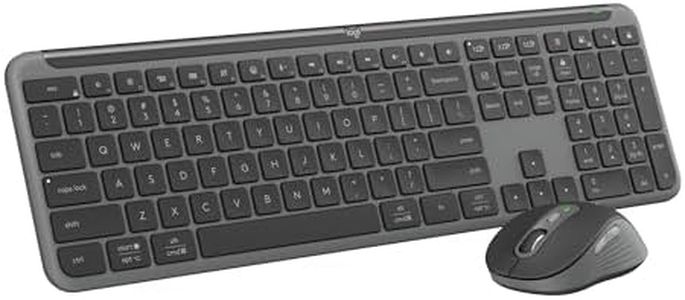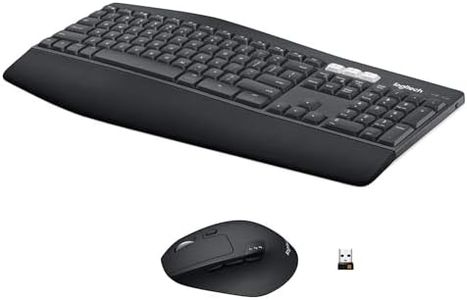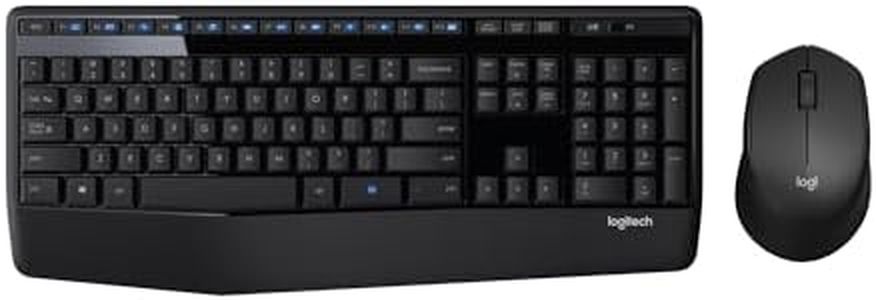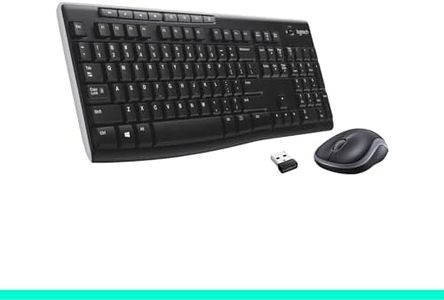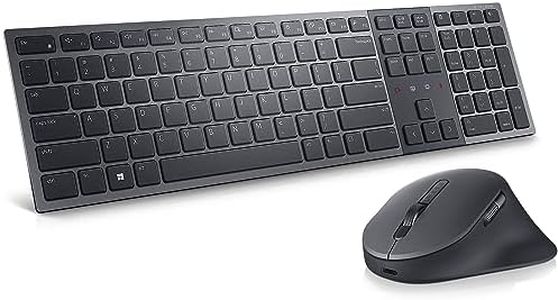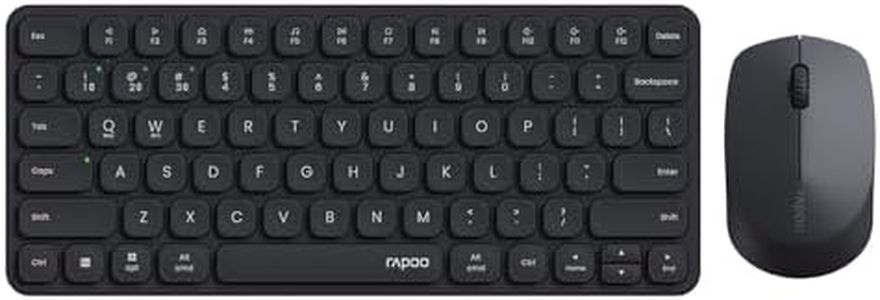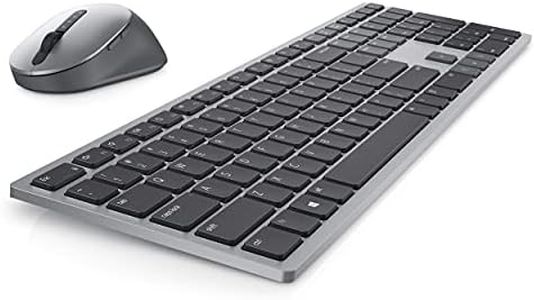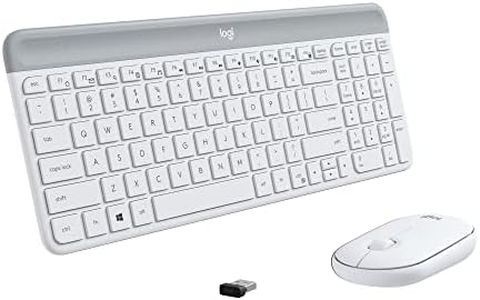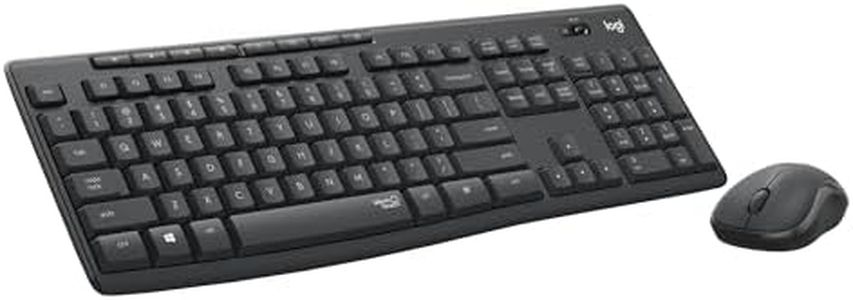We Use CookiesWe use cookies to enhance the security, performance,
functionality and for analytical and promotional activities. By continuing to browse this site you
are agreeing to our privacy policy
10 Best Wireless Keyboard And Mouse Combo
From leading brands and best sellers available on the web.By clicking on a link to a third party's website, log data is shared with that third party.
Buying Guide for the Best Wireless Keyboard And Mouse Combo
Choosing the right wireless keyboard and mouse combo is all about finding a set that feels comfortable, suits your day-to-day needs, and offers reliable performance. Since you’ll be using these devices frequently, it’s important to pay attention to features like battery life, connectivity type, ergonomics, and additional functions. Think about how and where you’ll be using them—whether it’s for work, gaming, or casual use—and let your needs guide your decision.Connectivity TypeConnectivity refers to how your keyboard and mouse connect to your computer or device. Most wireless combos use either Bluetooth or a USB dongle (often called a 2.4GHz wireless connection). Bluetooth is great for pairing with multiple devices or tablets, while USB dongles often offer a more stable, lag-free experience but occupy a USB port. If you want to use your combo with several devices, Bluetooth is a wise choice. If you prioritize stability or only need a single connection, the USB dongle approach is simple and reliable.
Battery LifeBattery life indicates how long your keyboard and mouse will run before needing fresh batteries or a recharge. Some devices use disposable batteries, while others have built-in rechargeable ones. Battery life can range from a few weeks to several months depending on usage and features like backlighting. If you dislike frequent charging or changing batteries, look for sets that advertise longer battery life or have auto-sleep functions. If you use your combo intensely or enjoy features like backlighting, be prepared for shorter run times and choose a rechargeable option.
Ergonomics and ComfortErgonomics is about how comfortable and natural the keyboard and mouse feel during use. Keyboards can be flat, low-profile, or have curved designs meant to reduce strain, while mice can be contoured to fit your hand. Smaller setups are portable but less comfortable for long sessions, whereas larger, ergonomic sets can help prevent discomfort or injury during extended use. Pick a combo that matches the size of your hands and feels comfortable during your typical use—test out different shapes if possible to see what feels best for you.
Key Layout and SizeKey layout refers to the arrangement and number of keys—full-size keyboards include a number pad and more function keys, while compact models skip them for a smaller footprint. The right layout depends on your usage habits: if you enter numbers often or need function keys, choose a full-size model. If you value portability or have limited desk space, a compact layout is better. Some users prefer mechanical switches for a tactile feel, while others favor quiet, soft-touch keys, so consider what feels comfortable for your typing style.
Mouse FeaturesMouse features include the type of sensor, the number of buttons, and whether the device is ambidextrous. Standard mice work well for everyday use, but advanced features like additional buttons, adjustable sensitivity (DPI settings), and ergonomic shapes can enhance productivity or gaming. If you mostly browse and do basic tasks, a simple, comfortable mouse will suffice. For specialized work or gaming, prioritize a mouse with customizable buttons, high precision, and a comfortable fit for your dominant hand.
Additional FeaturesExtra features, such as media keys, customizable shortcuts, backlighting, or water resistance, can make your experience more convenient or enjoyable. Think about which extras actually benefit your routine; for example, backlit keys are useful in low-light environments, and dedicated media buttons can make controlling music or videos much easier. Avoid paying for features you won’t use—focus on sets that match your lifestyle and workspace.

